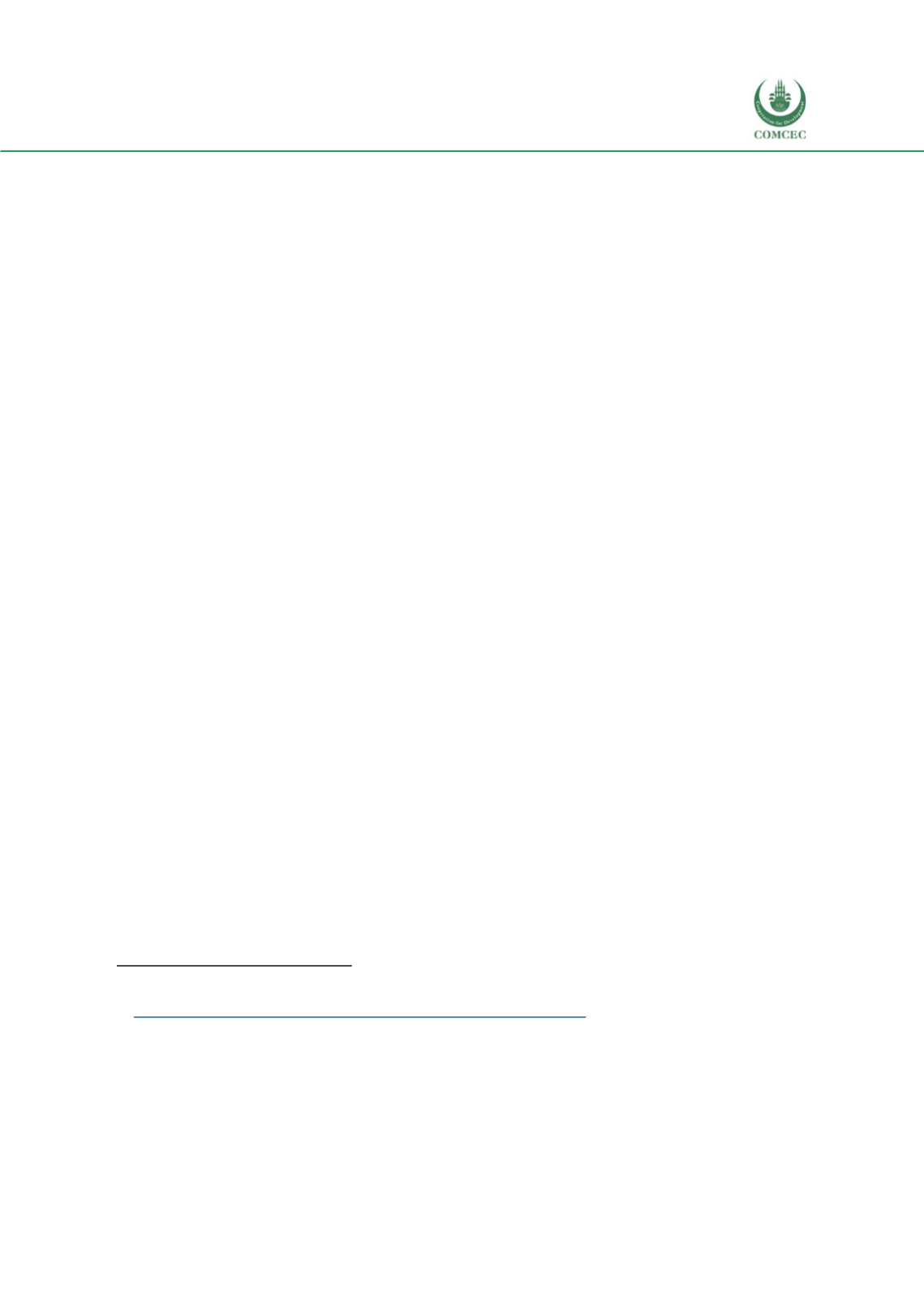

Increasing the Resilience of the Food Systems
In Islamic States in Face of Future Food Crises
135
heavily relies on food imports. Of the 44 food and beverage processing companies within the
Global 2000, Saudi Arabia’s Al Marai was the only food and beverage company from the OIC,
with $3.7 billion in revenues and a valuation of $6.2 billion.
527
A fifth challenge is the existence of high trade barriers in OIC countries. This has substantially
limited intra-OIC trade, which represents only $34 billion, or 18%
528
of food imported by the
OIC in 2018. Tariffs applied by OIC members are higher than the WTO average for the majority
of OIC countries, in particular for agricultural products. Furthermore, while OIC countries have
in total signed 115 Regional Trade Agreements by October 2018, most signed by the OIC
member states are bilateral and concluded with the developed countries.
529
A sixth inhibiting factor is the lack of financial support for companies in OIC members, most
notably those seeking to export. Global trade finance was a $12.3 trillion industry in 2016,
representing 75% of global trade.
530
Total intra-OIC trade lay at $250 billion in 2017, with $1.8
trillion in imports across the OIC.
531
Despite substantial potential, the Islamic Trade Finance
industry was estimated at only $186 billion in 2016, with substantial room for growth.
532
OIC Opportunities
The Halal Food and products trade represents a significant opportunity for OIC countries to
enhance food security, an opportunity that has not been fully realized. The 57 Organization of
Islamic Cooperation (“OIC”) countries spent, in aggregate, $1.5 trillion on food and lifestyle
products and services in 2017, and this spend is projected to grow to $2.4 trillion by 2023,
providing a broader accessible market opportunity for Indonesia. These countries represent
80% of global Muslim spend on lifestyle sectors—which includes food and beverages, apparel,
media and recreation, pharmaceuticals, and cosmetics
533
- the core sectors affected by Islamic
faith-based requirements in products and services.
Trade represents a key component of OIC member spending; OIC member countries are net
importers of products across the Halal/Islamic lifestyle sectors, importing $249 billion, or 16%
of Muslim spend. The OIC had a trade deficit of $106 billion in 2017, importing , in aggregate,
$249 billion and exporting $143 billion across food and beverage, apparel , media and recreation,
pharmaceuticals, and cosmetics.
534
Food was the most significant category of OIC imports, in
which the top exporters to the OIC in 2017were all non-OIC countries; Brazil led ($18.3 billion
exported), followed by the U.S. ($12.9 billion), India ($12.6 billion), Russia ($10.0 billion), and
Argentina ($9.5 billion).
527
Fortune 500 List 2018.
http://fortune.com/global500/list/filtered?non-us-cos-y-n=true528
https://www.trademap.org/Index.aspx52
9 http://www.comcec.org/en/wp-content/uploads/2018/11/2018-TRD-OUT.pdf530
“Shariah-compliant Trade Finance: Developments and Opportunities.” Report. SalaamGateway. April 12, 2017.
https://www.salaamgateway.com/en/story/report_shariahcompliant_trade_finance_developments_and_opportunities-SALAAM1204201708112
531
Based on proprietary sales data for Turkey provided by Halalbooking, with spend per tourist and share of total Muslim
tourists extrapolated tothe top ten destinations based on relativeMuslim tourists and costof living (as defined in Salaam
Gateway’s report on Halal Beach Resorts in 2016).
532
Ibid.
533
“State of the Global Islamic Economy Report 2018/19.” Thomson Reuters and DinarStandard. October 2018.
534
ITC Trademap. 2018.
















